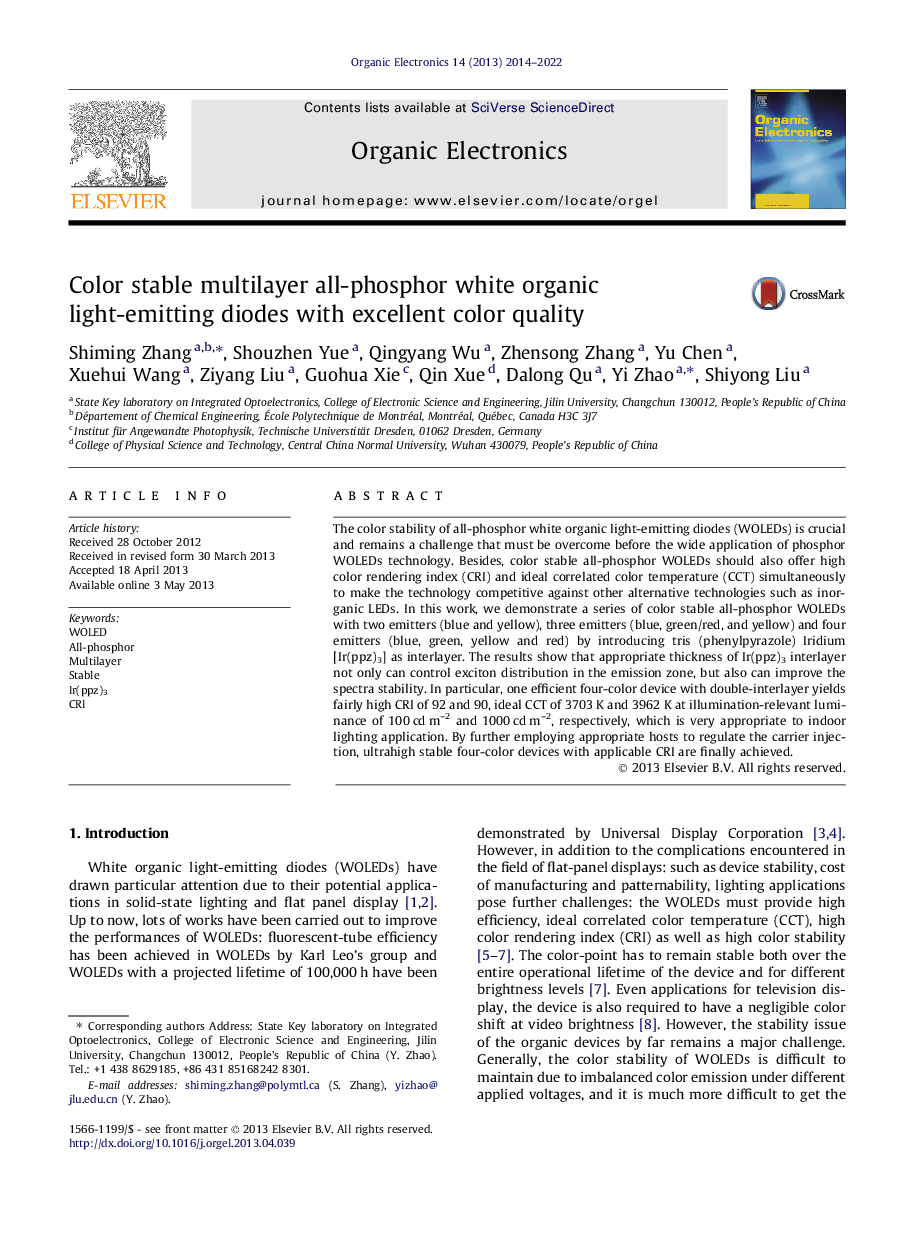| Article ID | Journal | Published Year | Pages | File Type |
|---|---|---|---|---|
| 1265217 | Organic Electronics | 2014 | 9 Pages |
•Color stable all-phosphor WOLEDs are obtained utilizing Ir(ppz)3 interlayer.•High CRI of 92/90 at 100/1000 cd m−2 is obtained in a four-color device.•CIE coordinates of the best four-color device only change from (0.388, 0.455) to (0.387, 0.453) over 100–1000 cd m−2.
The color stability of all-phosphor white organic light-emitting diodes (WOLEDs) is crucial and remains a challenge that must be overcome before the wide application of phosphor WOLEDs technology. Besides, color stable all-phosphor WOLEDs should also offer high color rendering index (CRI) and ideal correlated color temperature (CCT) simultaneously to make the technology competitive against other alternative technologies such as inorganic LEDs. In this work, we demonstrate a series of color stable all-phosphor WOLEDs with two emitters (blue and yellow), three emitters (blue, green/red, and yellow) and four emitters (blue, green, yellow and red) by introducing tris (phenylpyrazole) Iridium [Ir(ppz)3] as interlayer. The results show that appropriate thickness of Ir(ppz)3 interlayer not only can control exciton distribution in the emission zone, but also can improve the spectra stability. In particular, one efficient four-color device with double-interlayer yields fairly high CRI of 92 and 90, ideal CCT of 3703 K and 3962 K at illumination-relevant luminance of 100 cd m–2 and 1000 cd m–2, respectively, which is very appropriate to indoor lighting application. By further employing appropriate hosts to regulate the carrier injection, ultrahigh stable four-color devices with applicable CRI are finally achieved.
Graphical abstractFigure optionsDownload full-size imageDownload as PowerPoint slide
